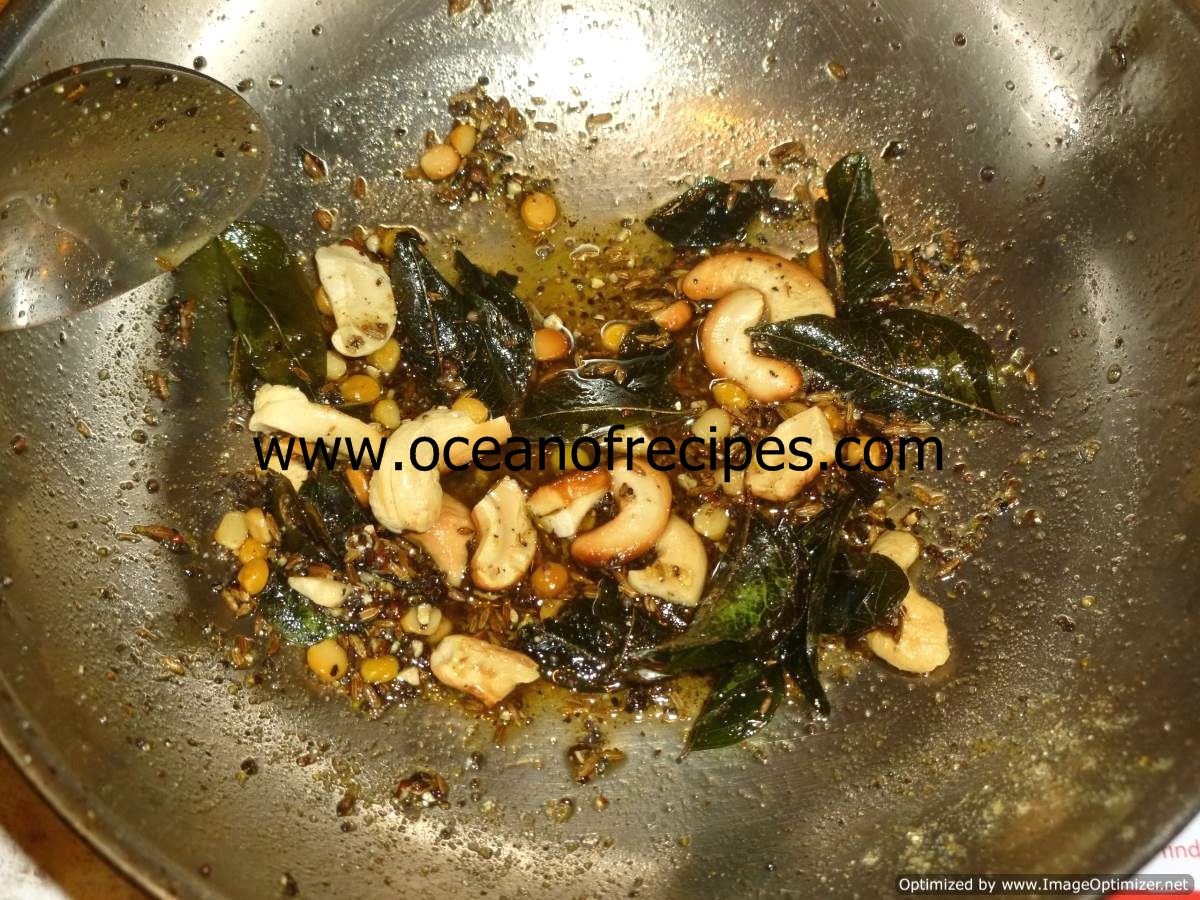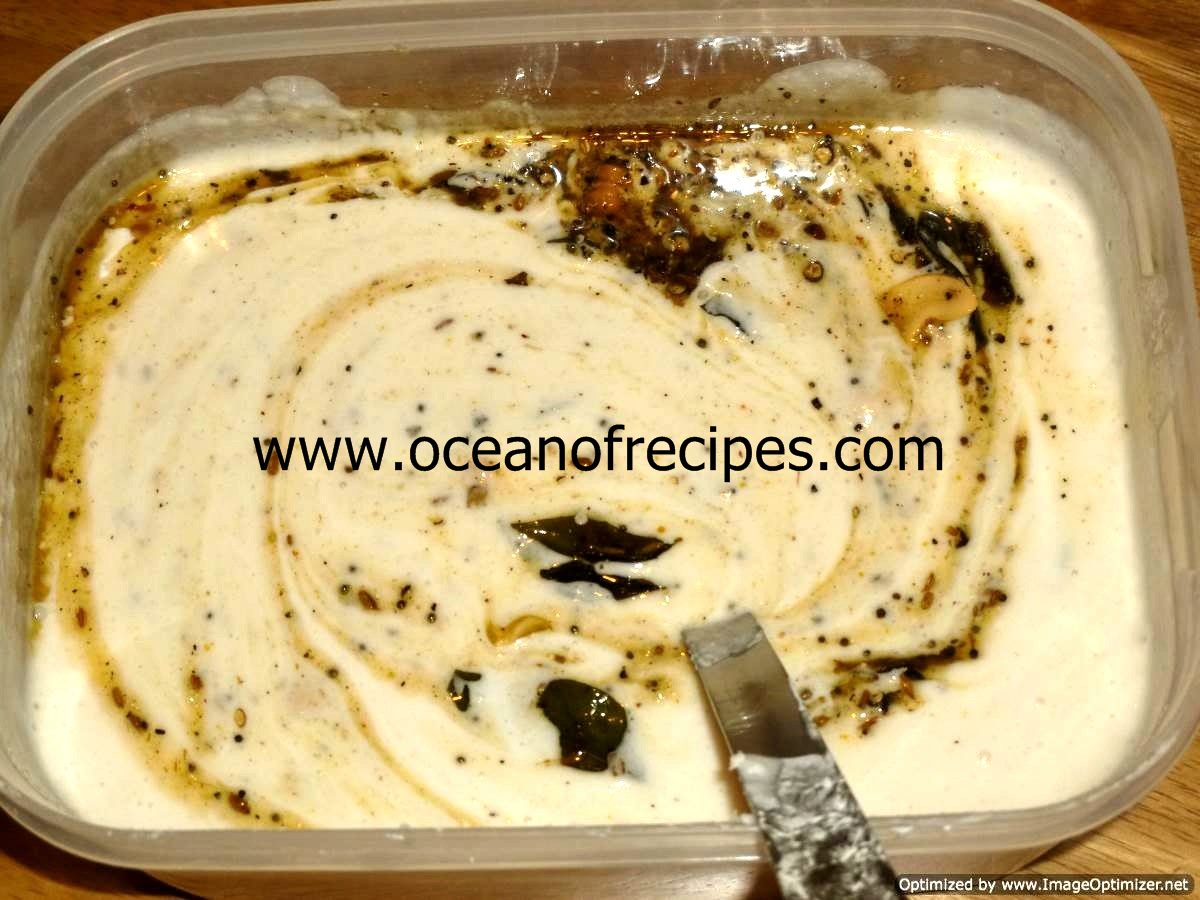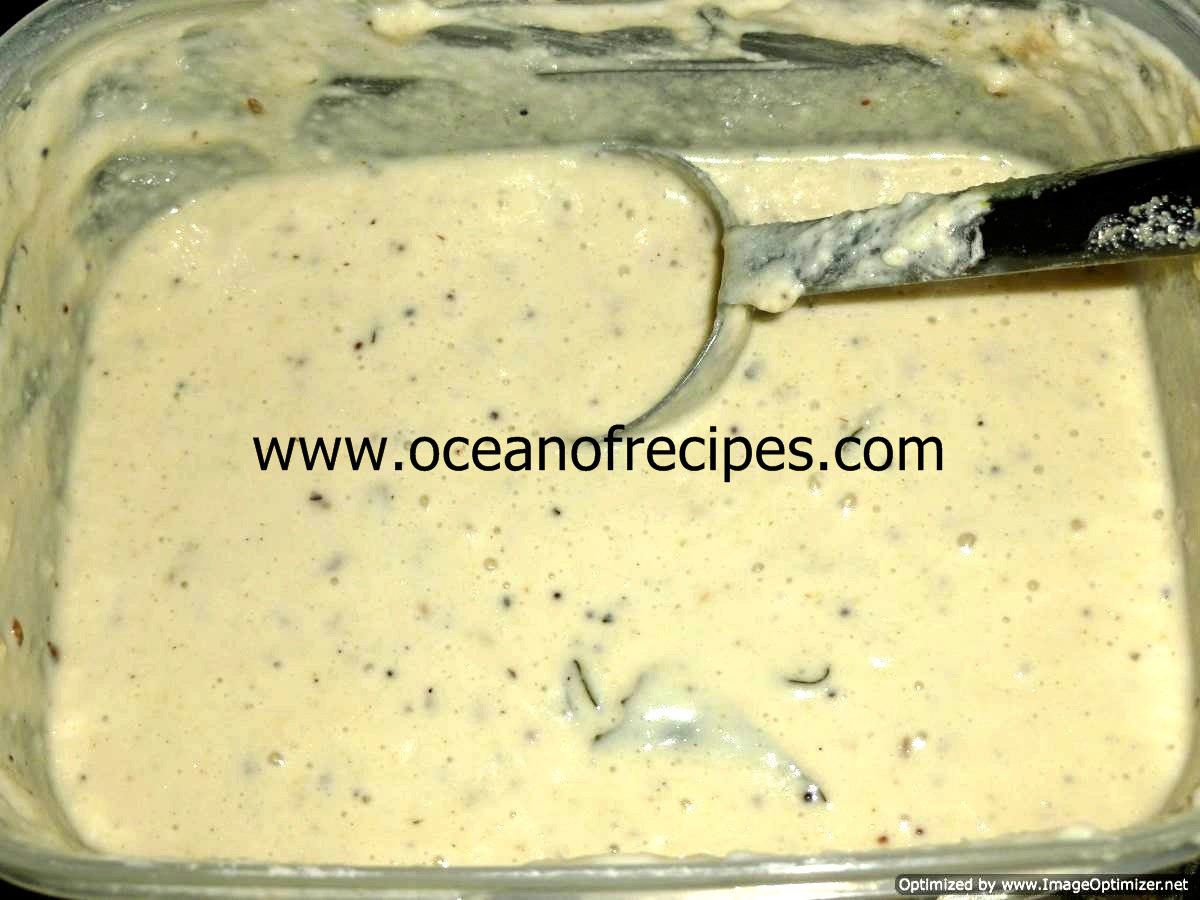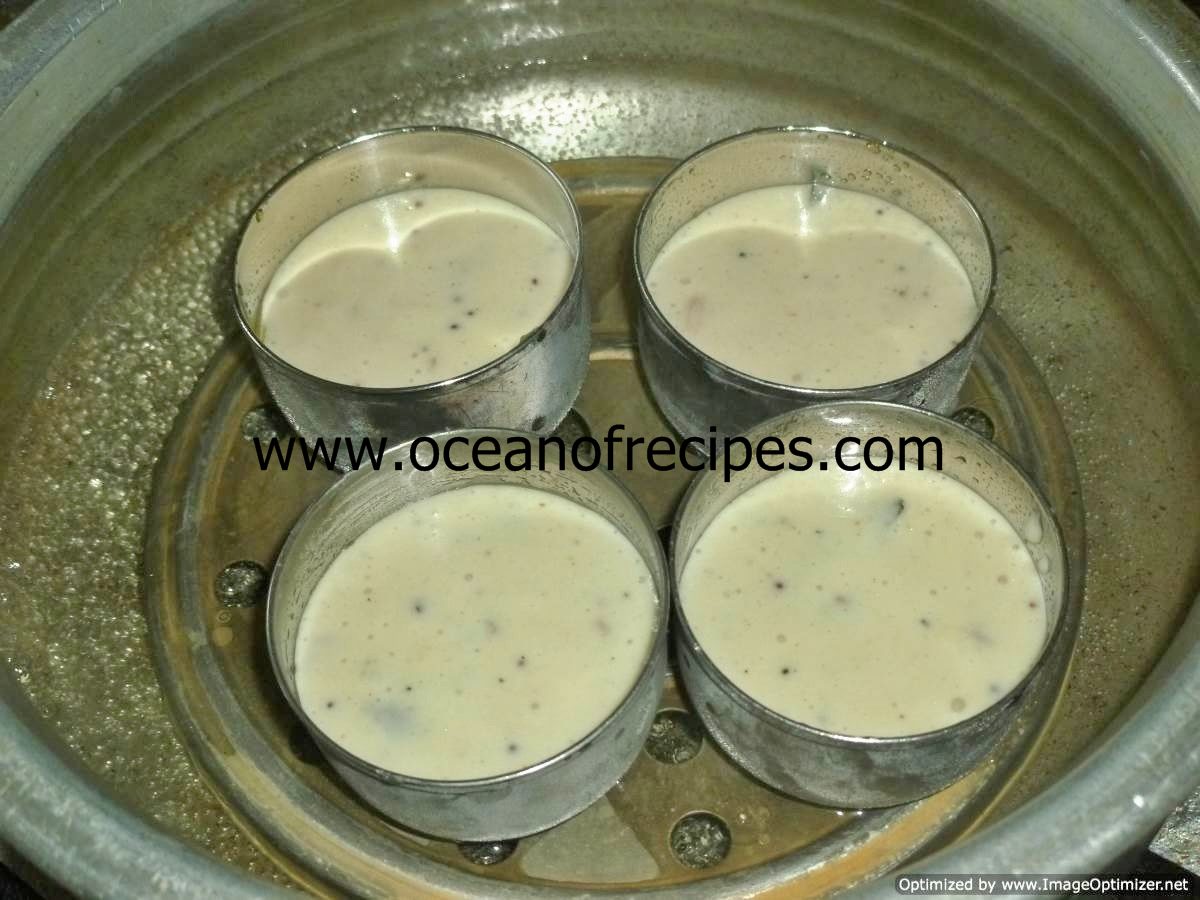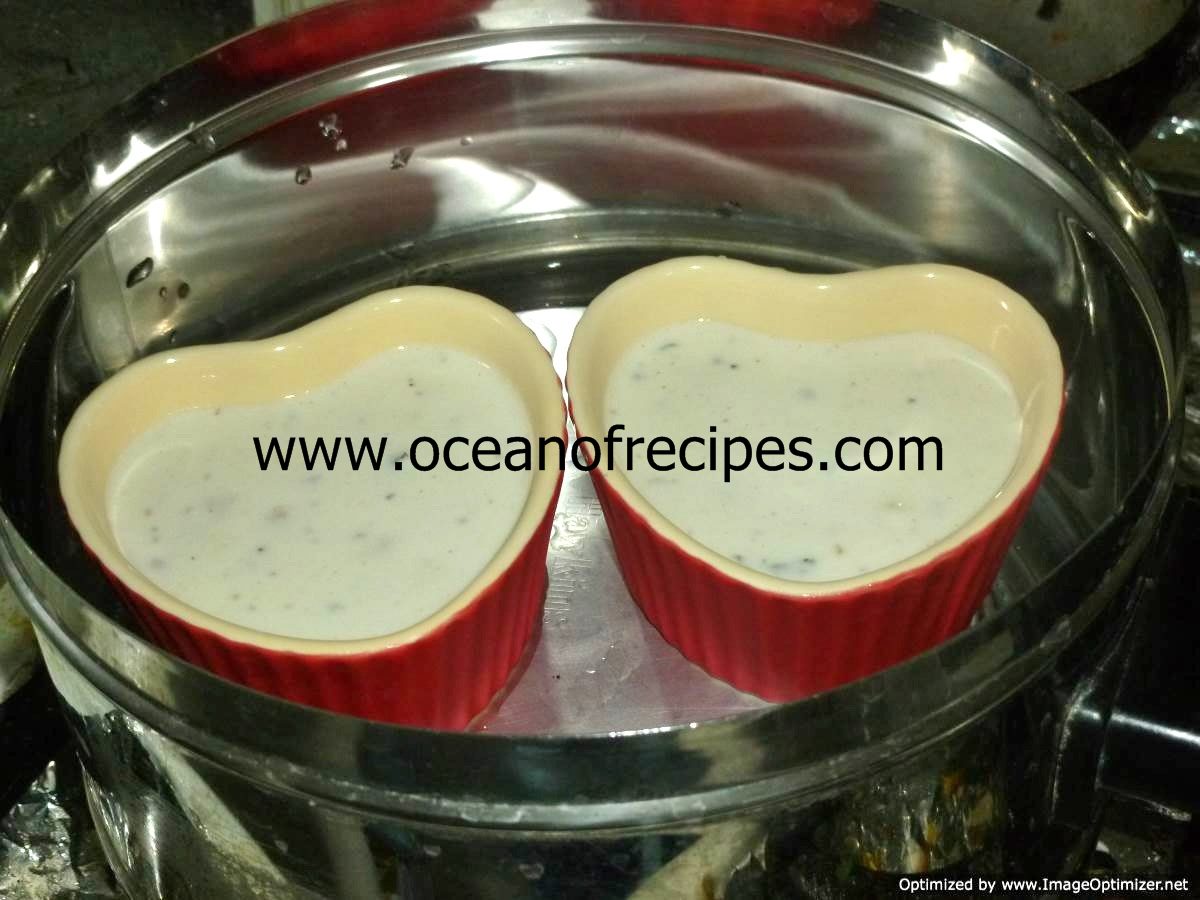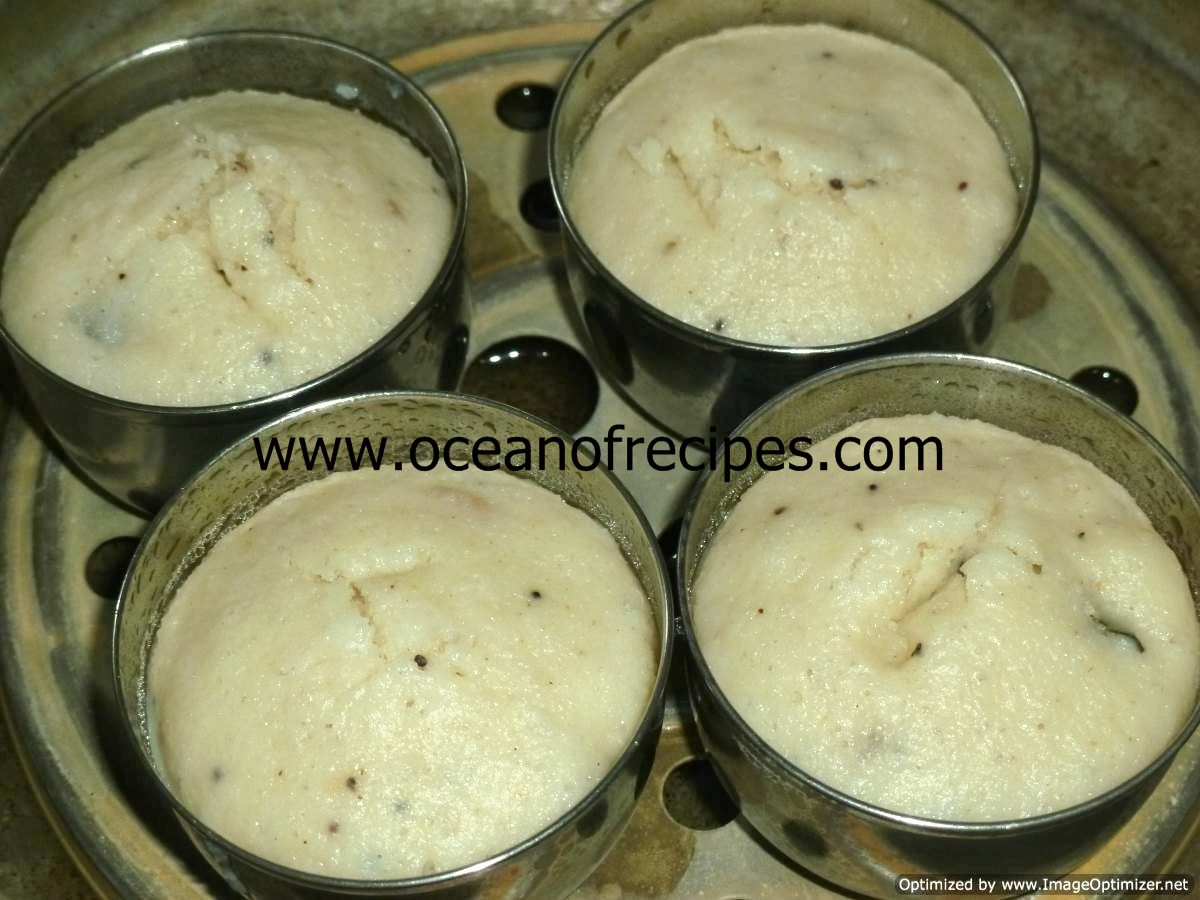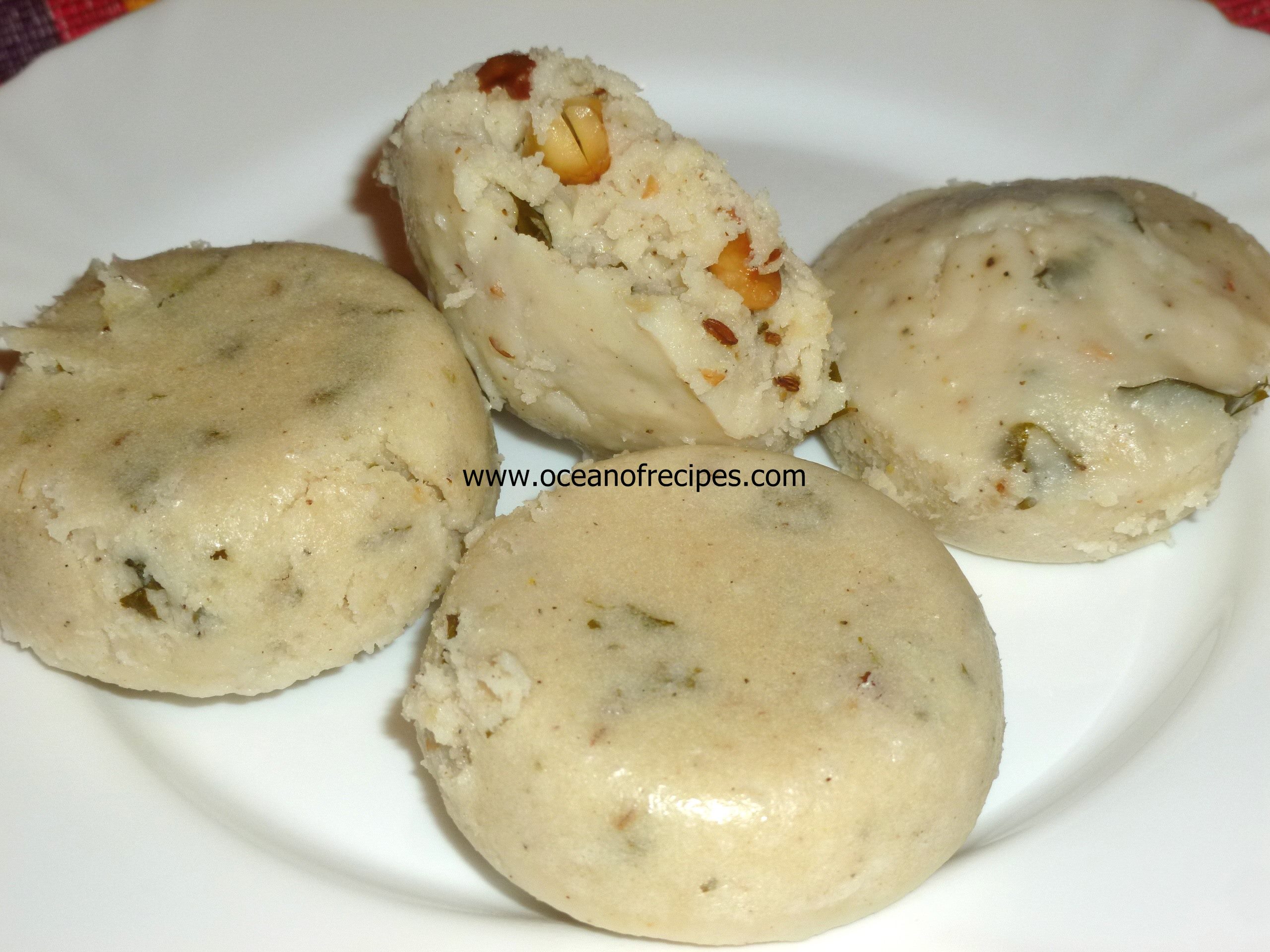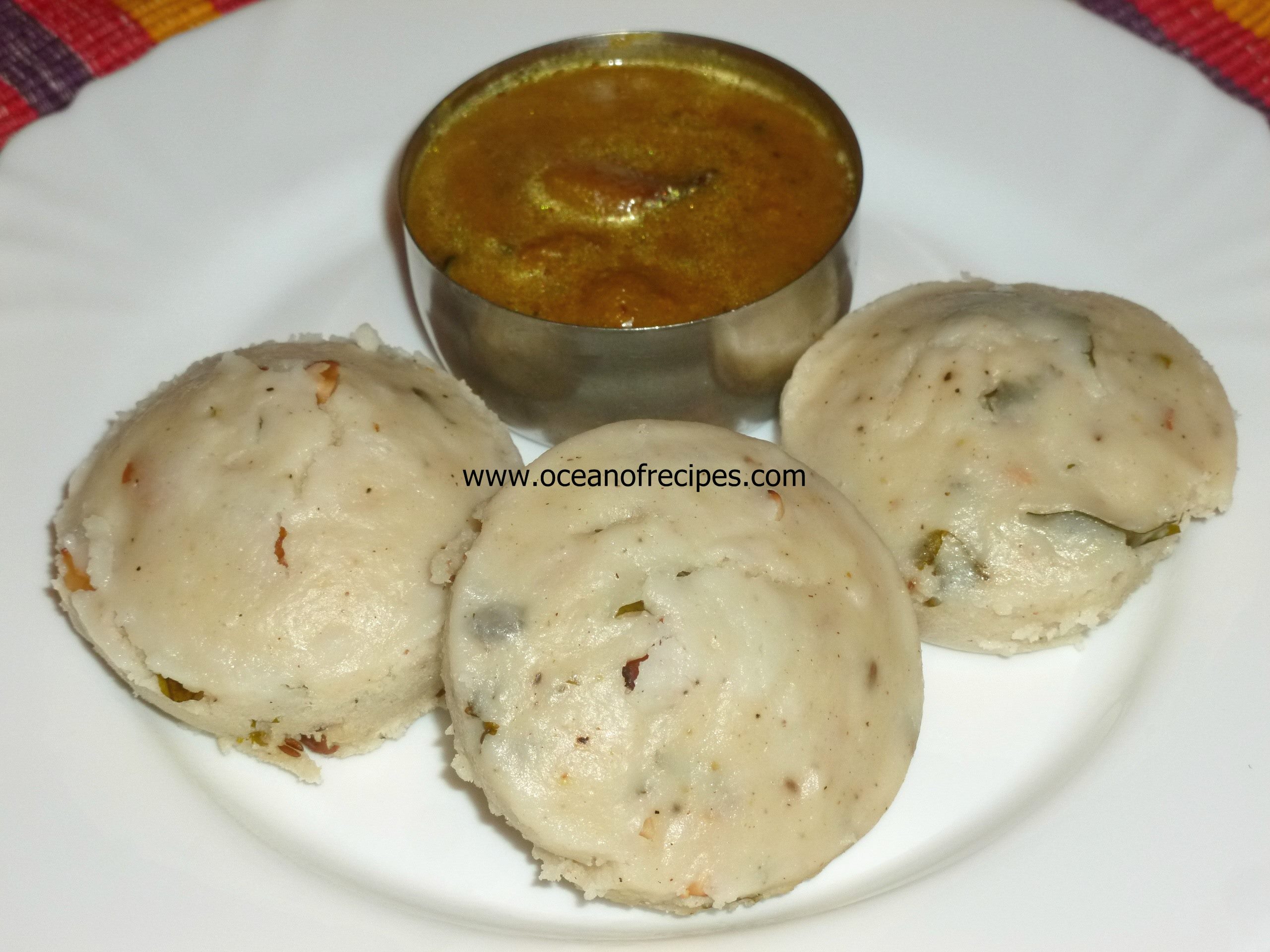![]()
Kanjeevaram idli/Kudalai idli/Kanchipuram idli is a variation to the regular idli (steamed rice cake). Kanchipuram idli originated from the place called Kanchipuram in Tamil Nadu, famous for silk sarees, where I bought few of my sarees for my marriage 9 years ago. One of my aunts accompanied with us for shopping who suggested us to have Kanchipuram idli while shopping. Kanchipuram idli is slightly spiced and steamed. But these idlis are traditionally steamed in cups made out of dried leaves - manthara leaf cups called dhonnai. Kanchipuram idlis are also known as Kudalai idli named after the leaf cups, which gives extra flavour to the idlis. Kanchipuram idlis are made on small cups made with banana leaves or in a tumbler or any cylindrical shaped vessel or like a big cake and also using idli plates.
I have prepared Kanchipuram idli quite a few times but with different rice and proportions. Idli rice or par boiled ponni rice with raw rice (sona masoori or ponni raw rice) and urad dal. I take both as 2:1:1 or 1:1:1 ratio, but I opted more for equal proportions. There are 2 ways to prepare:
- One is after grinding the batter, add dry ginger powder (chukka powder in Tamil) and hing (Asafoetida). Then add the tadka/tempering and then ferment.
- Second method is - after fermentation, add dry ginger powder, hing (Asafoetida) and tadka/tempering. Leave for 1 hour and then cook the idlis.
After doing lots of home work and doing trials in Kanchipuram idli, the easy one is the regular idli batter which I make idlis. I take a portion and then add the ginger powder and tempering ingredients and make Kanchipuram idlis, which is easy but you can try the other method also, which is very delicious and flavoured. Whenever I have prepared Kanchipuram idlis, I have used different vessels.
Sesame oil (not the Chinese one) is also known as gingelly oil, til (hindi) oil, nalla ennai in Tamil.
Preparation time: Soaking 6 hrs, grinding 40 mins, fermentation 10 hrs or more
Cooking time: 15 to 20 mins
Cuisine: South Indian, Tamil Nadu
Serves: 3 to 4 people
Spiciness: Mild
Ingredients
- Idli batter – 3 cups
OR
- Par ponni boiled rice – 1/2 cup
- Raw rice (Sona masori) – 1/2 cup
- Urad dal – 1/2 cup
- Water – 2 cups
Tadka / tempering
- Sesame oil – 2 to 2 1/2 tbsp
- Mustard seeds – 3/4 tsp
- Chana dal – 1 tsp
- Cashew nuts (split) – 10
- Curry leaves (chopped) – 12
- Cumin seeds (crushed) – 1/2 tsp
- Black pepper (coarsely ground) – 1/2 tsp
- Hing (asafoetida) – 1/4 tsp
- Dry ginger powder – 1/2 tsp
- Salt - as per taste
Method
- Soak both the rice for 4hrs to 6hrs or overnight also. I have soaked urad dal 1hr. Sometimes I have soaked it for 11/2 hrs and also 4 hrs, but my idlies were soft. If you don’t have par boiled ponni rice, then use idli rice and raw rice (ponni or sonna masoori variety).
Grinding process
- This time instead of grinding separately, I have ground it by mixing alto-gether once.
- First add the urad dal in a wet grinder, grind it for 3min and then add both the rice and grind together for 1/2hr to 40min till you get the batter consistency.
or
- Grind Urad dhal to a soft paste and rice to a coarse paste. Mix both along with salt.
or
- The consistency of the batter should be nor thick and thin. Add water according to your rice and urad dal quality is. The batter should be like custard consistency.
- Now the batter is ready, at this stage you can add dry ginger powder and hing1/4th tsp powder and, then tadka/tempering.
Tadka / tempering
- Heat the pan with sesame oil , add mustard seeds, cumin seeds, Chana dal, cashew nuts, curry leaves, fry them until they are golden brown, add a pinch of hing (asafoet-ida) again and coarse black pepper powder in the end. Switch off.
- Allow to cool and add to the batter and mix them to the batter.
- Transfer the batter into a wider bowl or box but filled half of it, as after fermentation the batter raises.
- For steaming idlies, you can use traditional cylindrical shape tumbler or cake tin shape vessel or small cups or like heart shaped ramekins or dhonnai cups or normal idli plates but cooking time depends on in which vessel or tumbler shape you are cooking.
- Grease the heart shaped or small steel cups with ghee/sesamae oil, then pour the batter 3/4th and make sure that the water level is not too high and that the tumblers are standing sturdily. Now close the vessel with the lid and steam it in a pressure cooker without a whistle or idli cooker also for 15 to 20 minutes, or in a idli cooker (idli plates) for 8 to 10min.
- When it is cooked, take out the tumblers or idli plates and let it rest for some time, scoop out with spoon carefully, the idlies, will come out easily.
- Serve hot with sambar and chutney.
Notes
- You can refrigerate the idlis and when needed can heat it in microwave and serve it, it will be good.
- I have used dry ginger powder, coarsely ground black pepper and crushed cumin seeds in my batter.
- Cooking time depends on the size and type of container you have used. To check whether it is cooked or not , just pierce a tooth pick or a small knife. If it is cooked it will come out clean.
- Instead of sesame oil, you can use clarified butter/ghee.
- Before fermentation of the batter, sometimes, I first add ginger powder, hing (asafoetida), crushed cumin seeds and coarsely ground pepper. Then ferment and finally add the tempering with mustard seeds, curry leaves and chana dal. Use sesame oil (nalla yennai/nallennai) instead of clarified butter (ghee). It gives the idlis lots of flavour and unique taste.

